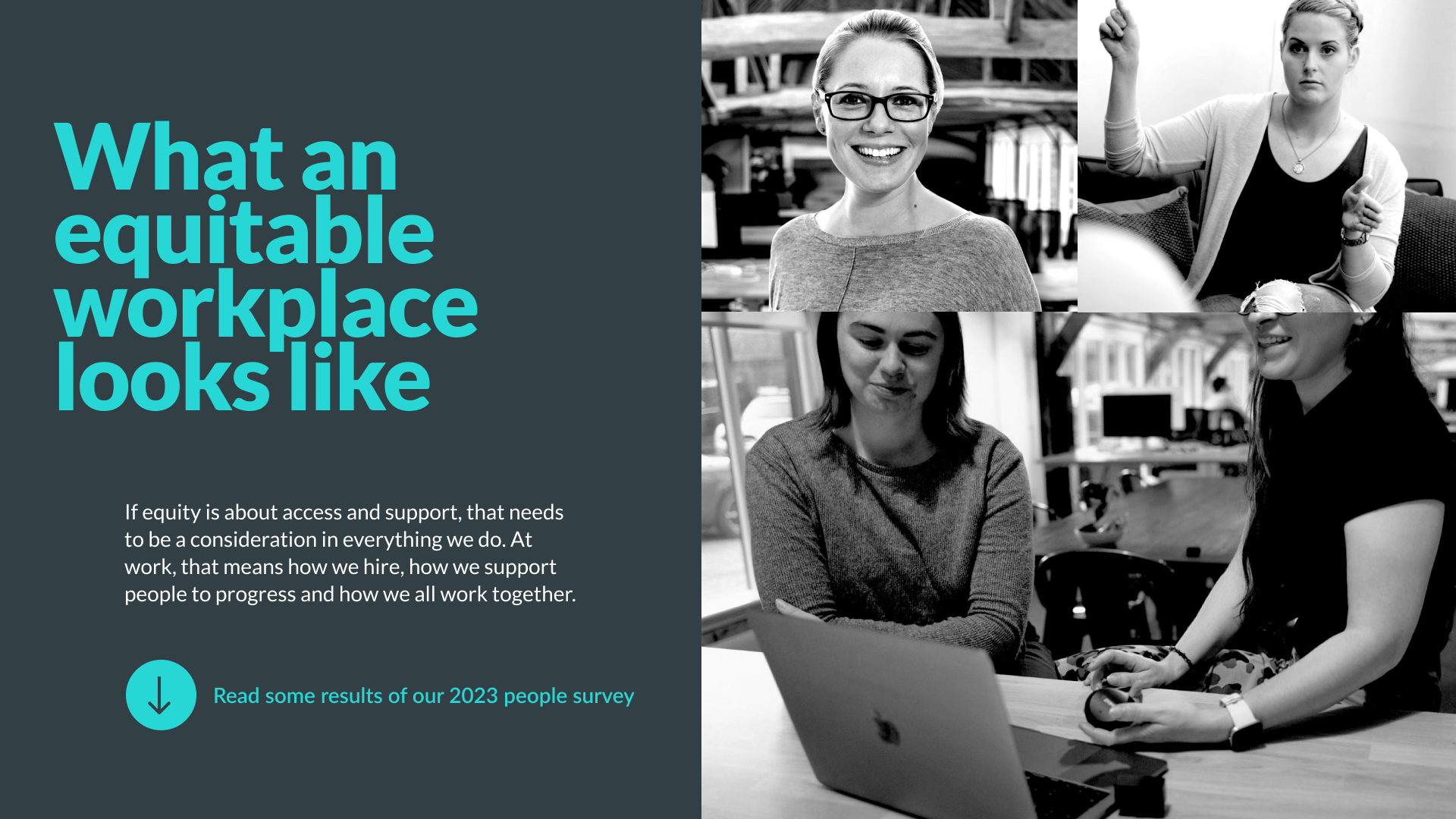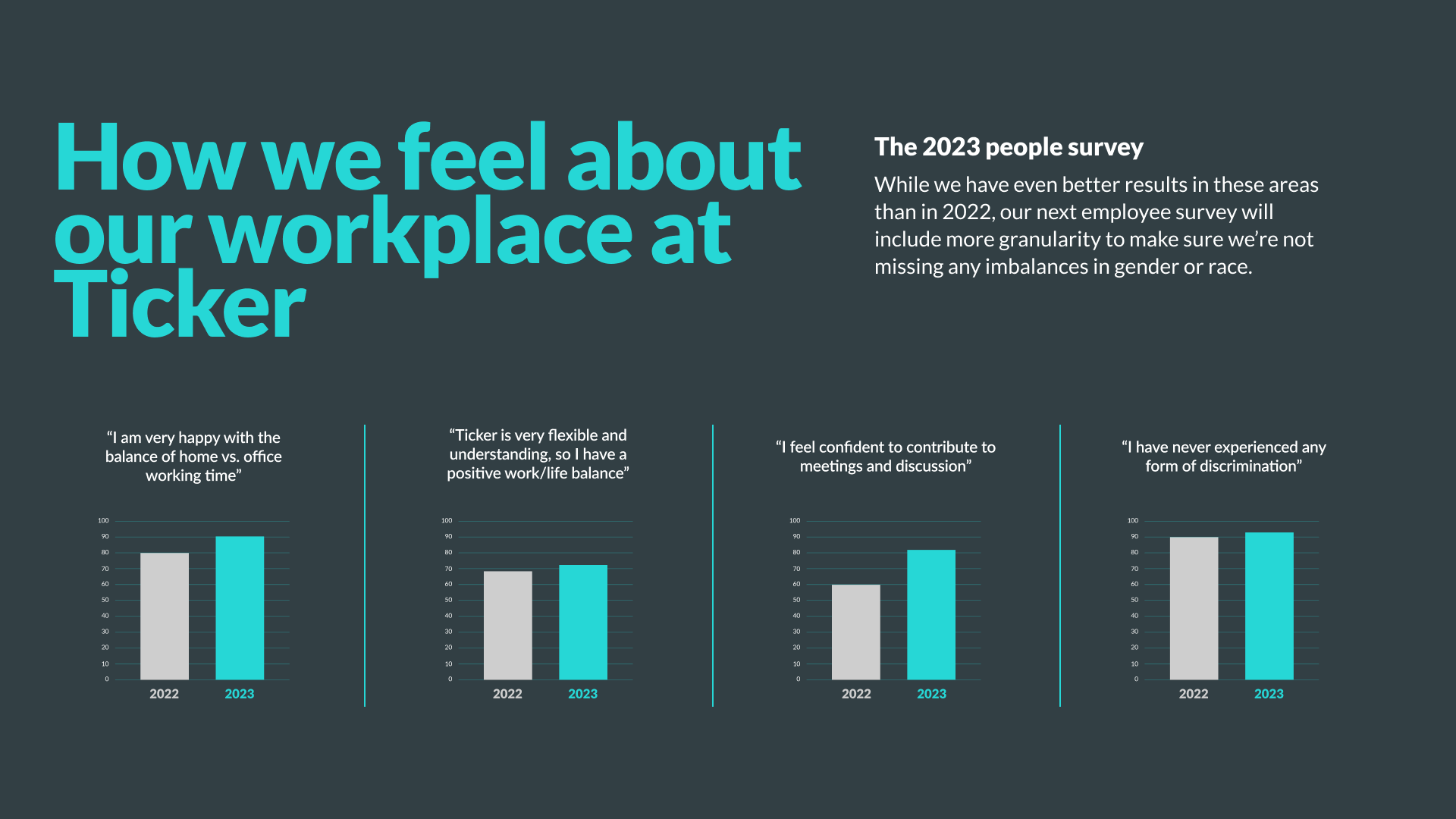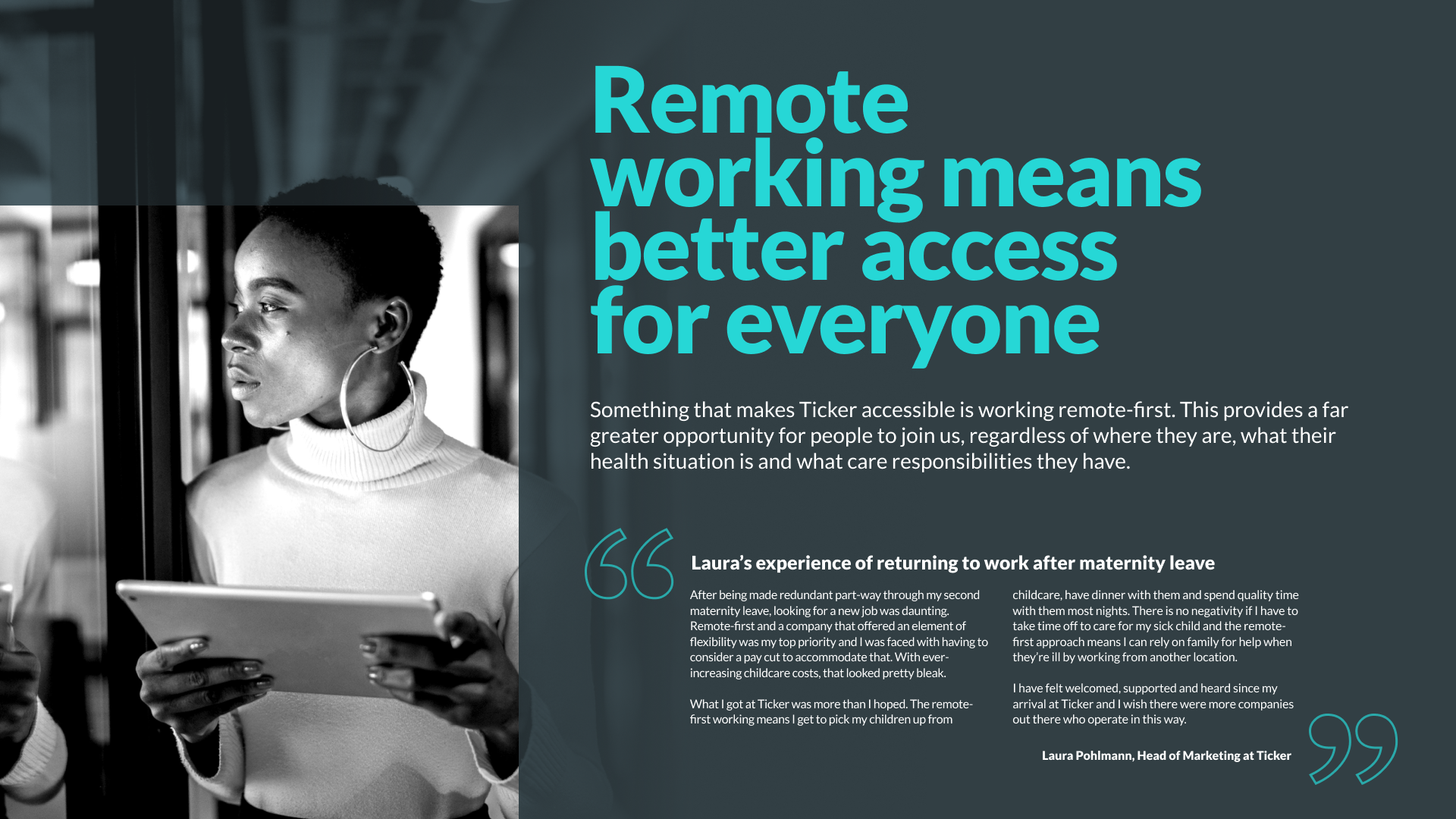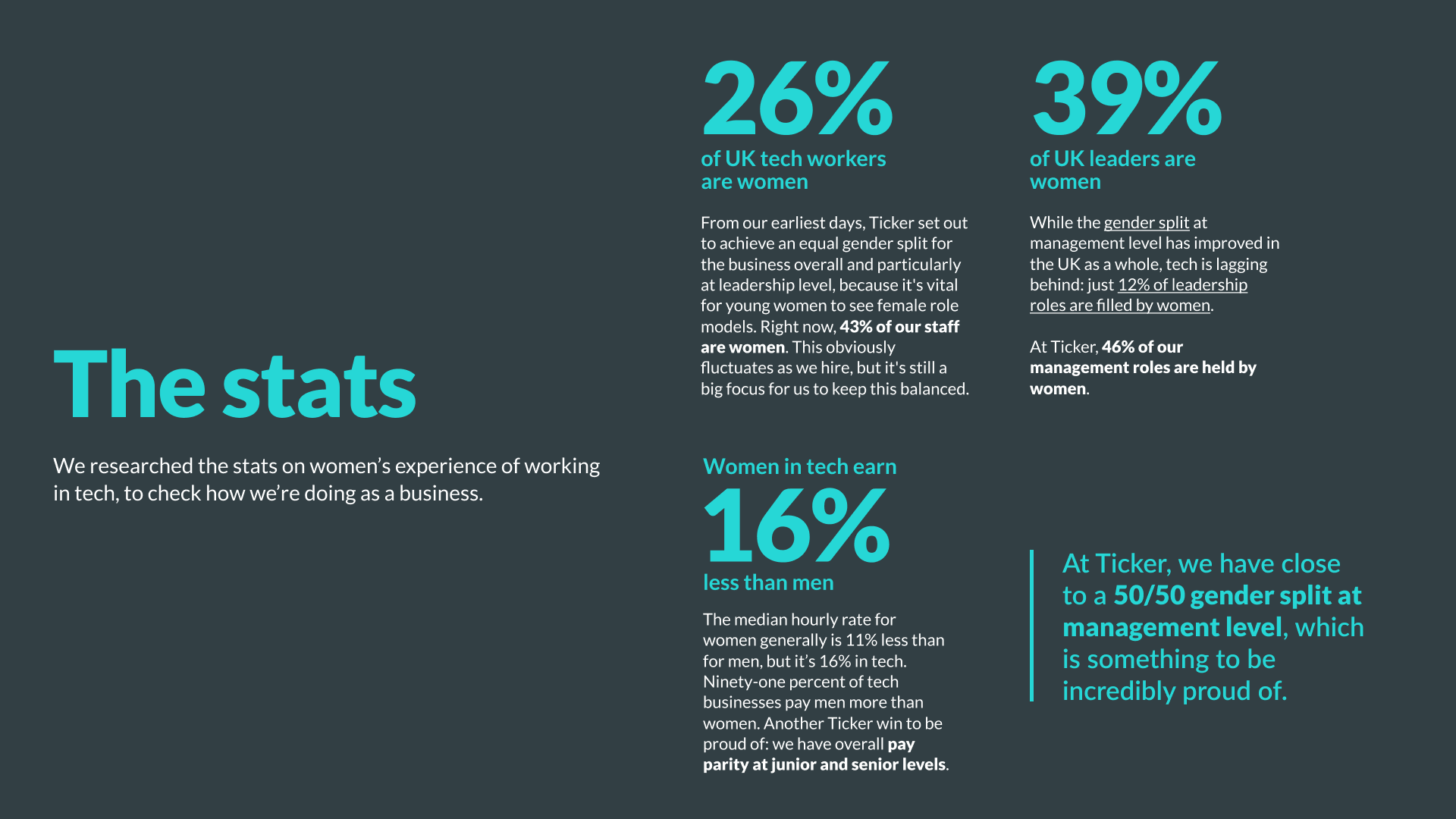Focusing on women in tech for International Women’s Day
International Women’s Day began as a protest, and that protest is still needed – a century later. Women in the UK earn a median hourly rate 11% less than men, but if they work in tech it’s nearer 16%.1
This year’s theme for IWD is Embracing Equity. To check ourselves, we researched the current landscape for women in tech and reported the stats against Ticker’s own numbers to everyone in the business.
Read some extracts from Ticker’s Women in Tech report:






Embracing equity is a guiding Ticker principle
As the numbers show, maintaining our gender balance (and pay) in leadership roles has been a huge focus since the beginning of Ticker. We set extremely high standards for ourselves, so we sometimes forget to recognise our progress.
We’ll never stop working on diversity and inclusion but today, we’re proud of how fully equity is embraced at Ticker.
“I’m very lucky to be surrounded by so many women in leadership roles at Ticker – in fact, nearly 50% of our leaders are women. We always wanted to have an equal gender split, and we’ll keep working to make sure it’s maintained.”Richard King
Ticker founder and CEO